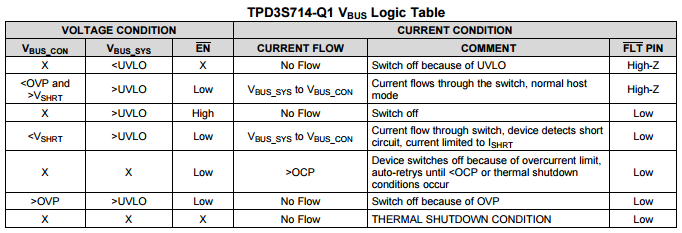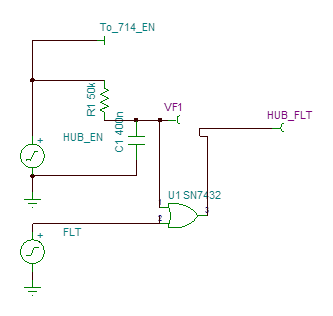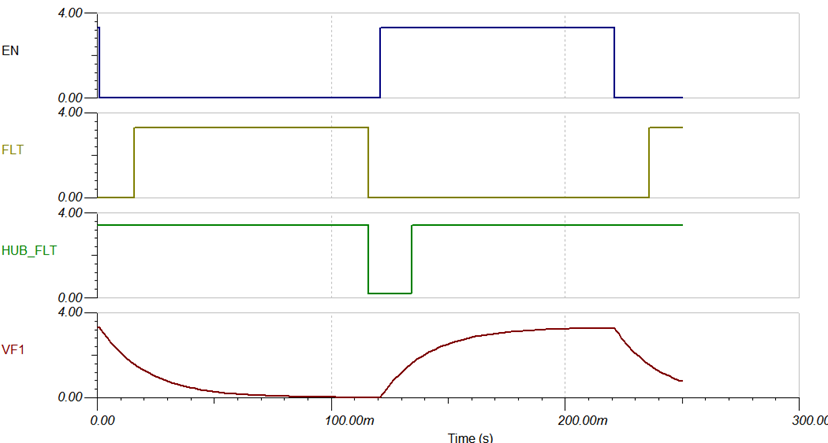We have designed in the TI TPD3S714 protection devices on our 6-Port PUSB Hub.
We eliminated the USB power switches (MIC2026) because the TPD3S714 has the 500mA OC protection that shuts OFF +5V VBUS in over-current or fault condition.
However, every time the TI protection device is powered ON, it momentarily send a FAULT signal to the Hub.
This in turn causes the port to shut OFF the power. And with the power OFF, the fault is never cleared.
I verified this by holding the enable signal low until the inadvertent fault signal is cleared at power-ON. When this is done, the port enumerates normally and can be re-enumerated until the power is cycled again.
Is there any way to get around this a to delay or eliminate this power-On Fault signal.
Attached is the schematic showing the first 5 ports protected with the TPD3S714 and one port (sixth) using the Mic2026.
The 6th port is the only port that enumerates the down-stream device.CyberData_PUSB_Hub_sch.pdf





